















































Utopia Airfield-A gem in KZN
By Brian Spurr

September saw my first visit to Utopia Airfield in the Underberg area of southern KwaZulu Natal. This picturesque facility is not far from Sani Pass in the Drakensberg and is the ideal spot for gliding in the mountain waves and thermals. Utopia is the home of the Drakensberg Soaring Club and is a wonderful facility that has mountain views that are difficult to beat.
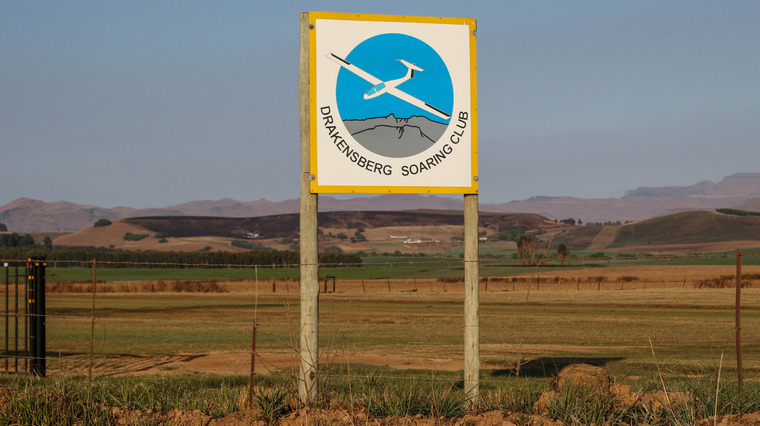
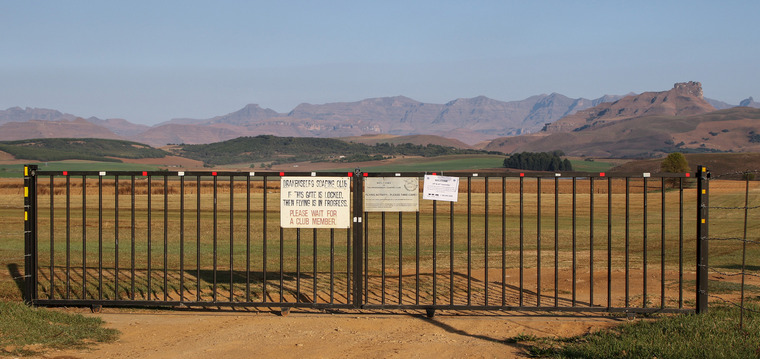
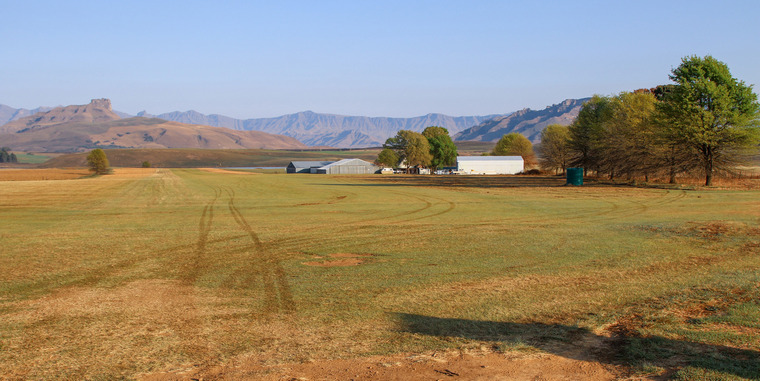
The entrance to Utopia looking down runway 14.
Utopia is situated 8 kms outside Underberg on a fairly rough dirt road. Obviously, the best way to arrive is by air! By road the airfield is 230 kms from Durban using the N3 and the R617. The route is good but stretches of the R617 have nasty potholes that keep drivers wide awake!
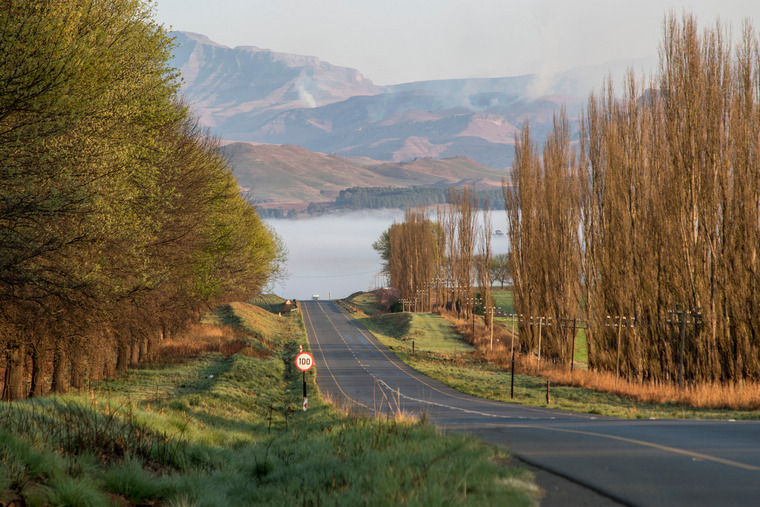
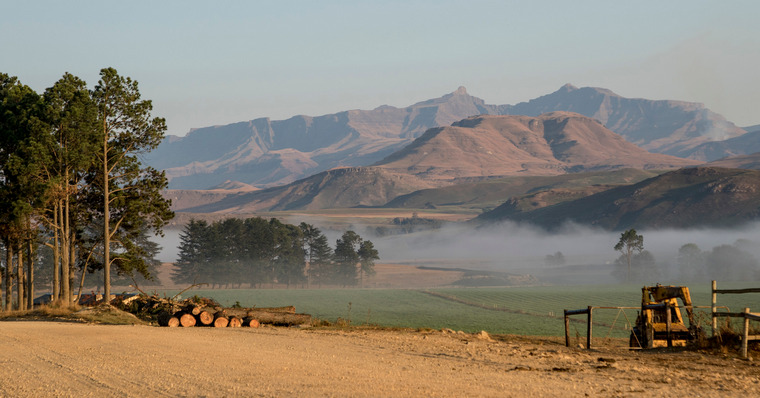
The R617 into Underberg.
The airfield was first used in 1972, so currently it is not far from the 50th anniversary at this venue. I have seen a copy of the original agreement signed by Dennis Wilson on 20 Jan 1973 allowing the club to use the site. The airfield is situated on the farm Utopia, which was owned by Dennis and after he passed away in 1993, the farm has been operated by his sons David and Colin. Colin is a glider pilot and also flies a Meridian, a Cessna 210 and a Polaris. Both David and Colin trained to fly gliders as young teenagers (13/14 years old) and David told me he was proud to go solo on his 16th birthday! David's son Luke is the third generation in the Wilson family to be mad on aviation and is currently doing flight training.
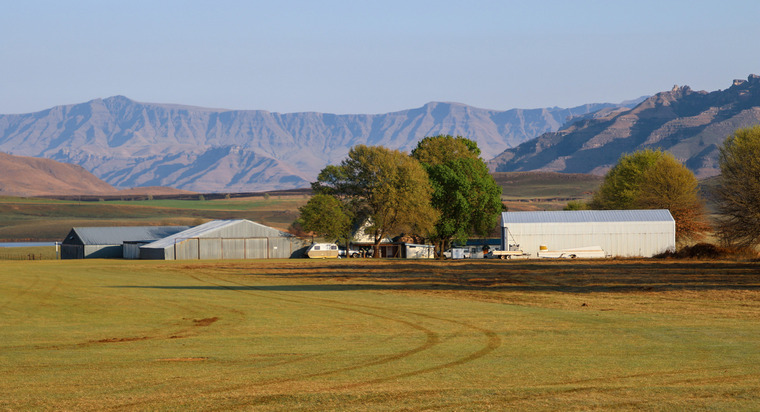
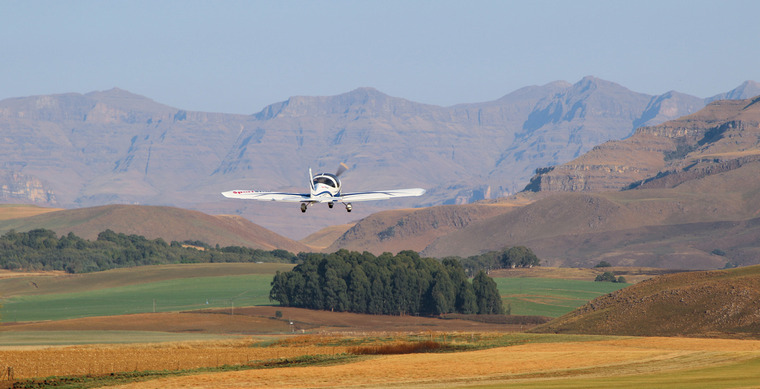
The airfield has two well maintained and cut grass runways 14/32 (1200 x 25 m) and 05/23 (1100 x 25 m). GPS Co-ordinates are S 29 degrees 48' 42" and E 29 degrees 23' 51" and the elevation is 5300 ft. AMSL. The radio frequency is 123.4. The variety of grass they have used on the runways is the toughest they could source and it has the least rolling resistance. It is similar to that used on polo fields.
The club owns two gliders and these are available for training with their experienced instructors. The gliders owned by the club are a Grob G103 Twin Astir (ZS-GSN) and a Schleicher ASK-13 (ZS-GOA), both of which are two-seat trainers.
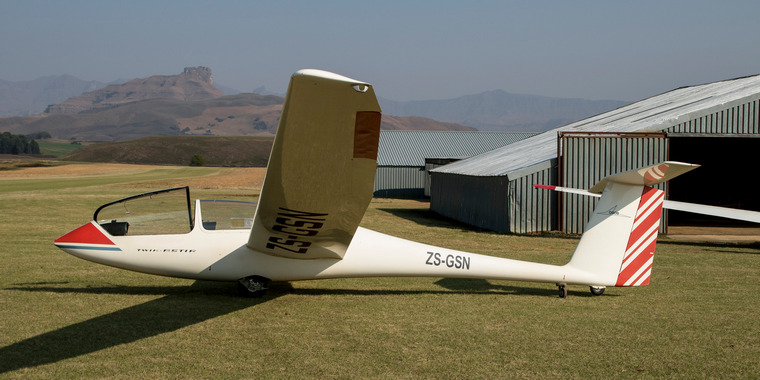
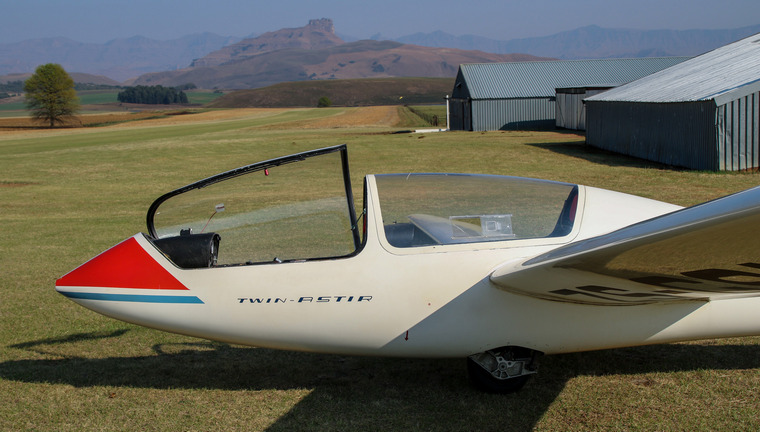
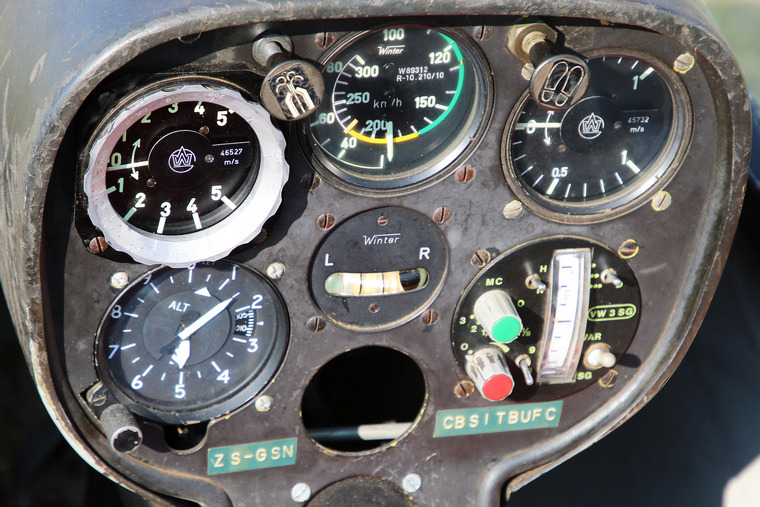
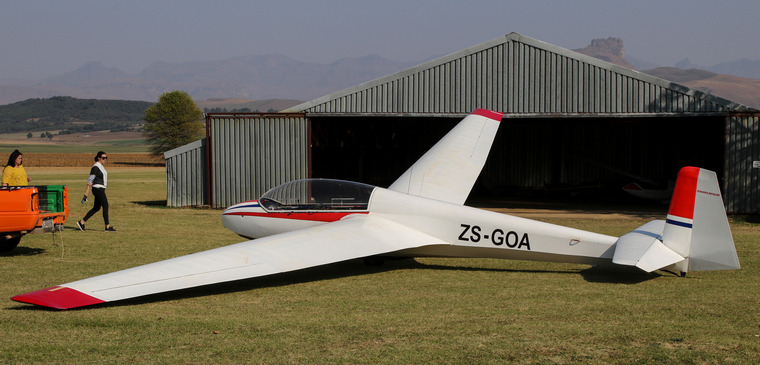
The club has great facilities. Several hangars, a clubhouse that has a kitchen, dining room and a lounge which looks out over the mountains. Upstairs there are two bedrooms that can be booked by visitors and a dormitory like sleeping area that can sleep at least eight people. Some of the members have constructed small flatlets on the property to enable them to have a private unit in which to spend the weekend etc.
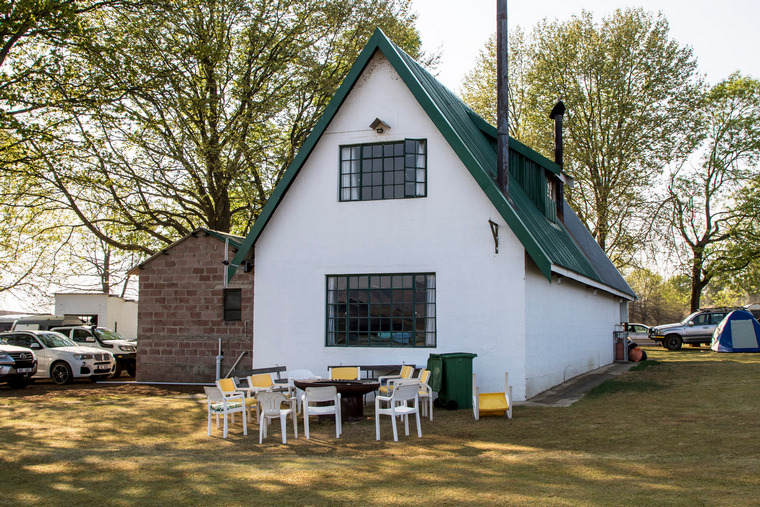
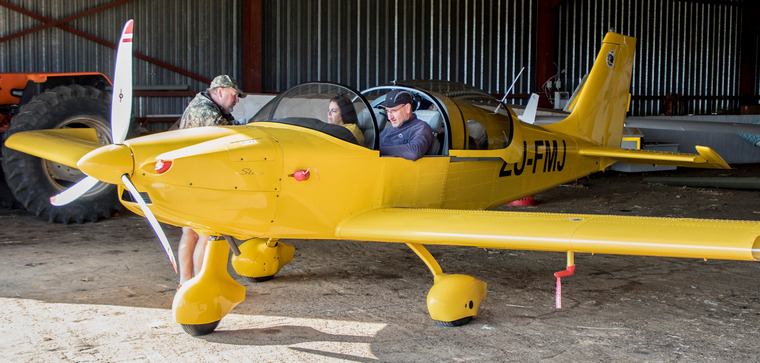

Gliding is very cheap when compared with motorised flying. An initial flight lesson costs only R300 and each subsequent launch is R150. The club uses a winch launcher but from time to time, aerial tugs are also used. The length of each flight varies according to thermal and wind conditions. This really is an excellent way to fly without breaking the bank.
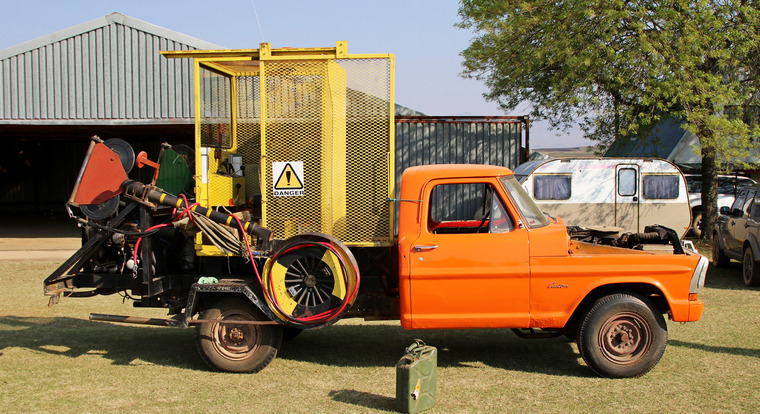
Pilot's Post visited the club on the Sunday 20th September and unfortunately chose the wrong day for the weekend fly-in. On arrival at 7am, the weather was magnificent and there was no wind whatsoever. The club provided a welcome breakfast for everyone on the field. The club gliders were taken out and towed into place and the winch was driven down and ready to go. Earlier in the week a strong wind had been forecast for the afternoon but unfortunately it arrived earlier than expected on the day. This sadly ended any chance of gliding on Sunday and the aircraft were returned to the hangar. The previous day was perfect weather and there were 27 launches keeping the club instructors very busy. Several aircraft flew in and some stayed overnight, but the threat of strong wind meant that a number of visitors decided not to make the event which included a number of microlights.
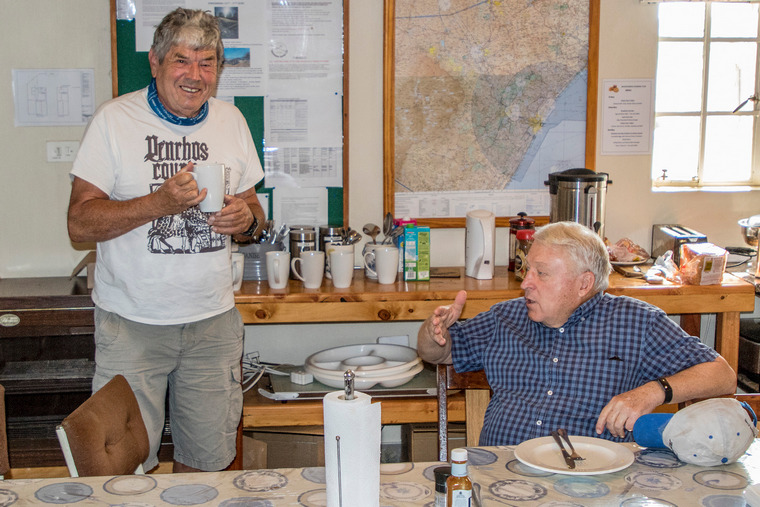
Ron Mitchell and Mervyn Roberts after breakfast.
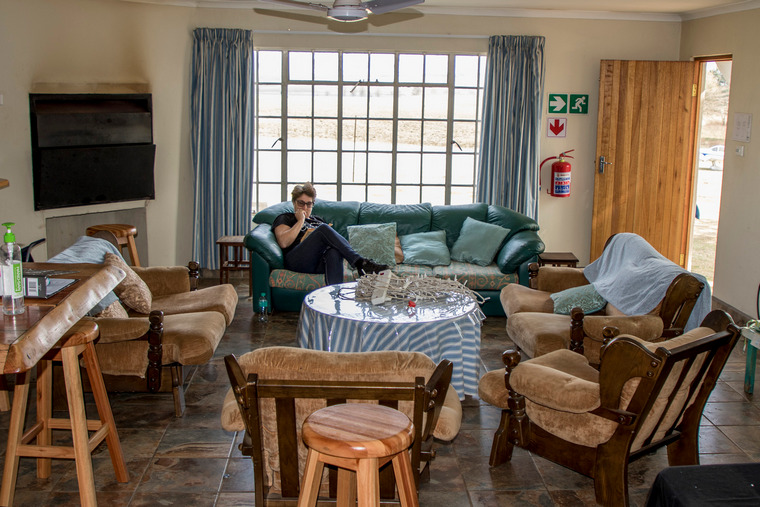
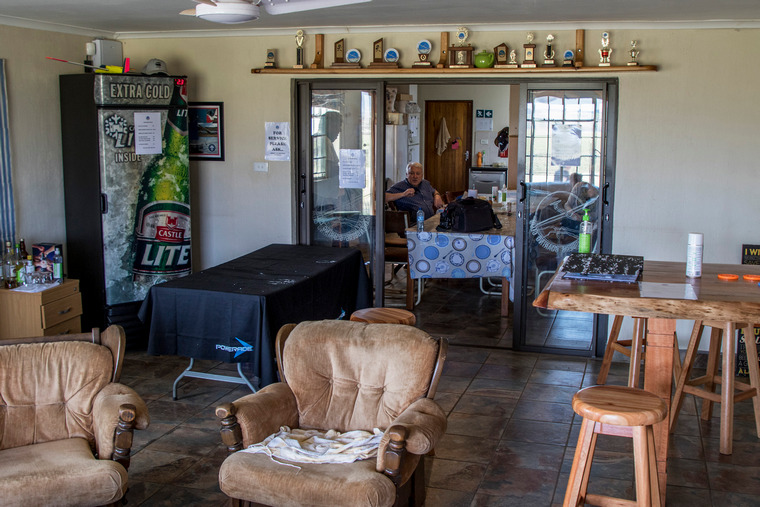
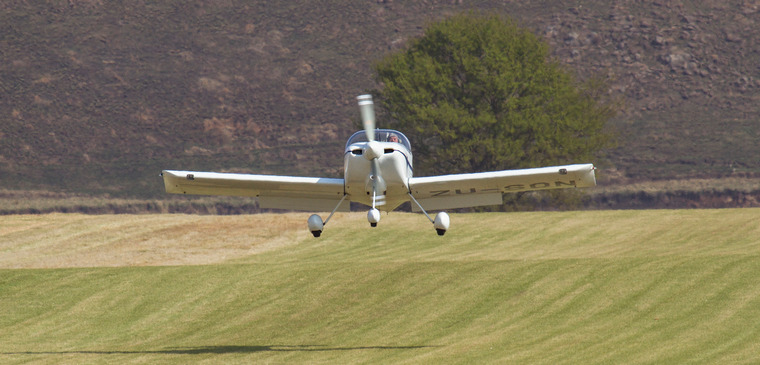
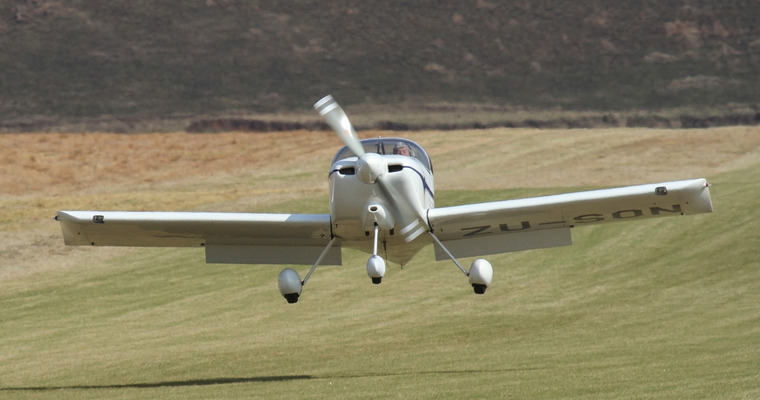
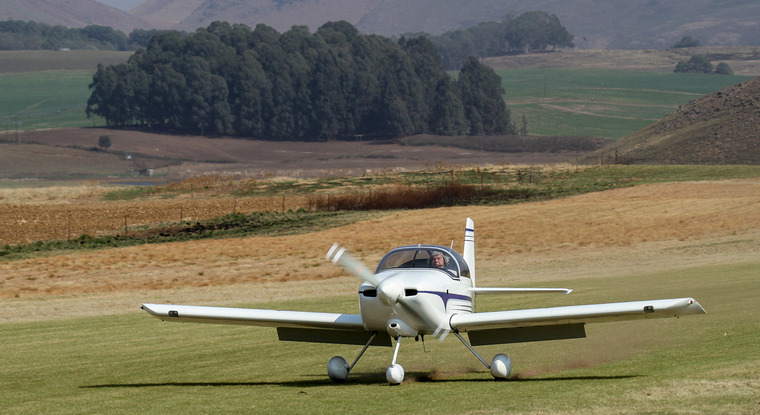
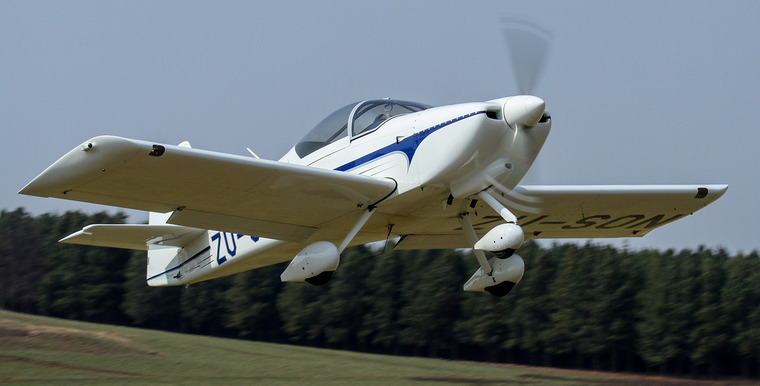
Before the wind arrived, there was a radio-controlled tug and glider demonstration. Also, several aircraft departed early to be sure that they beat the weather. For anyone who has not had the pleasure of visiting Utopia, it is well worth a trip. The club has a web page and a Facebook page that have contact details and other information. The club actively encourages people to come and visit and to experience the Drakensberg close up. Prior arrangements should be made.
The club committee comprises: Albert Willemse - Chairman; Dave Wilson - Utopia Farm Owner; Gavin Brown - Chief Flying Instructor; Donovan Barton-Hobbs - Treasurer / Secretary; Duncan Dean - Equipment Maintenance Co-Ordinator; Clinton Du Toit - Radio Controlled Aircraft and Dave Claxton - Events Manager.
The club arranges fly-ins on a regular basis. An unusual aspect is that one of the hangars is devoted entirely to RC aircraft and gliders. The Radio Control section of Drakensberg Soaring Club was established in early 2019. They found immense synergy with the full-size glider members and they worked on safety protocols which were signed off by the CAA resulting in Utopia Airfield achieving full RC (SAMAA) registration. They have their own hangar in which they keep their larger models, which are predominantly scale gliders up to 7m wingspan. They also have RC 'Tugs' which they use to aerotow the gliders. There are five members currently and they usually fly every fortnight.
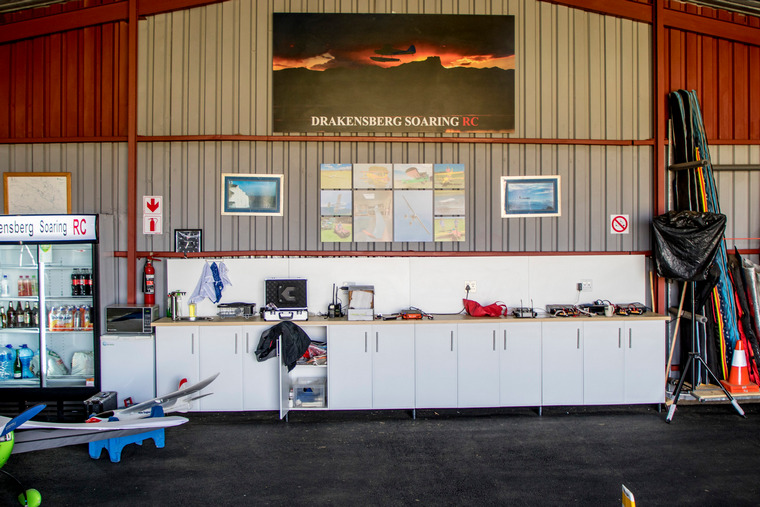
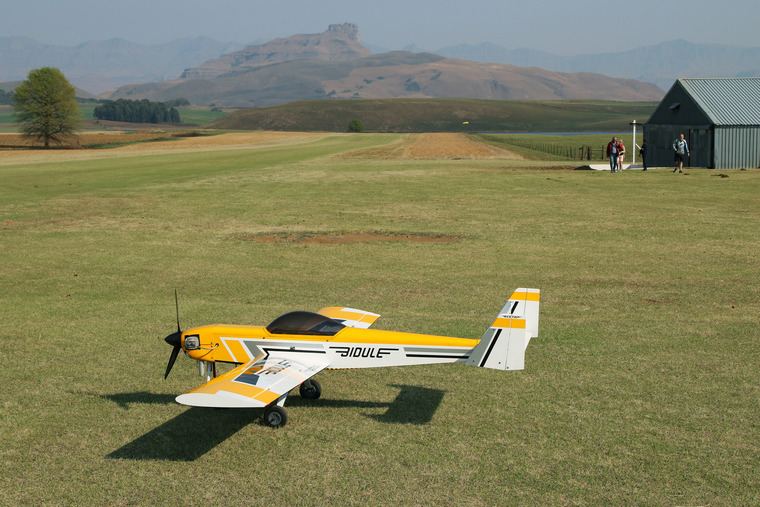
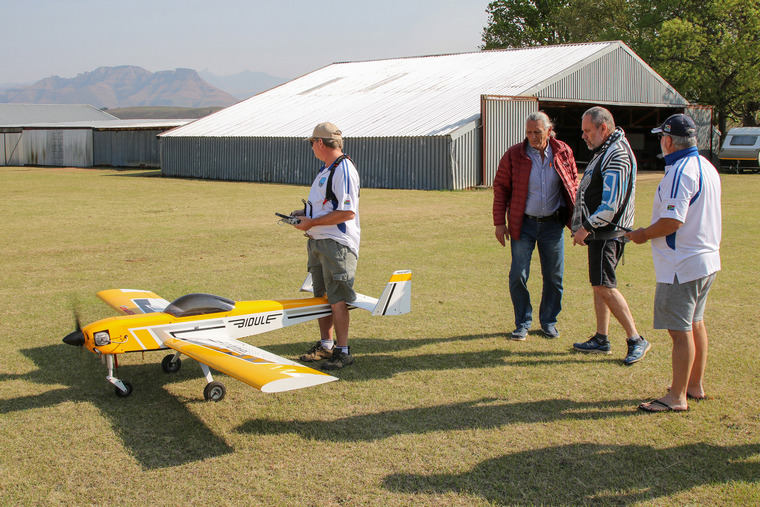
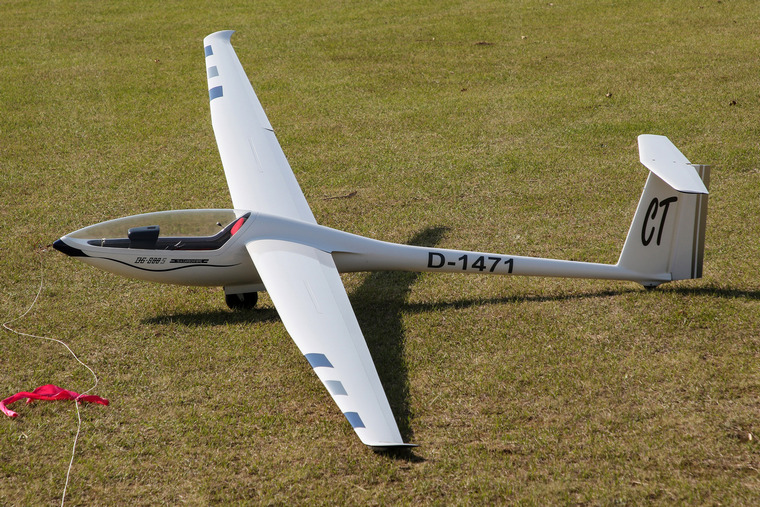

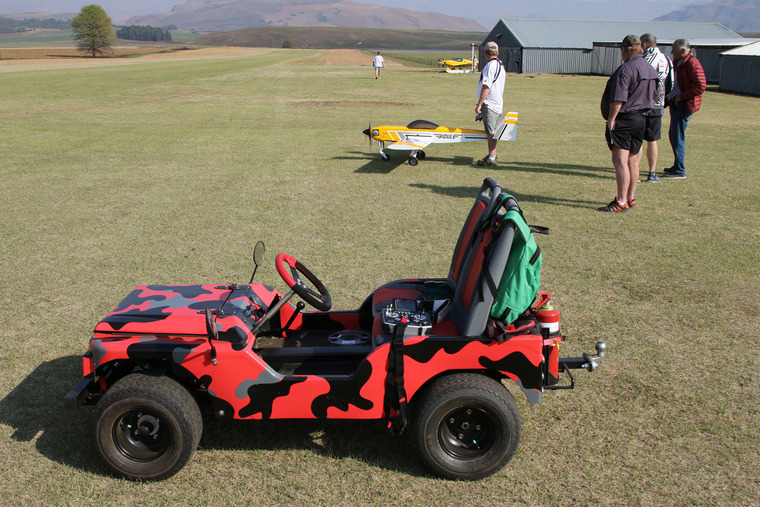
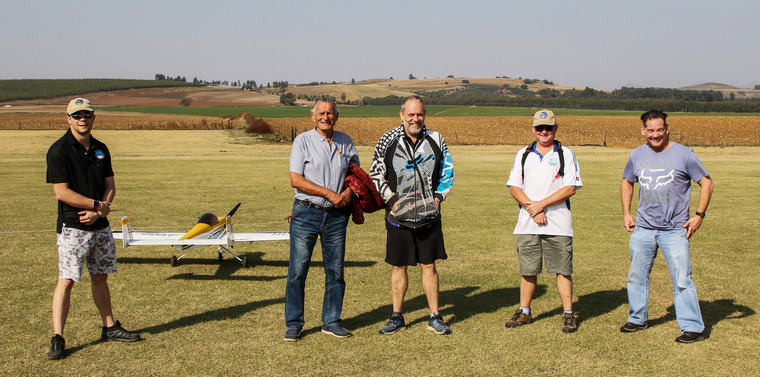
Gareth Brown, Stuart McGregor, Lloyd Wing, Clint Du Toit, Dave Lentle
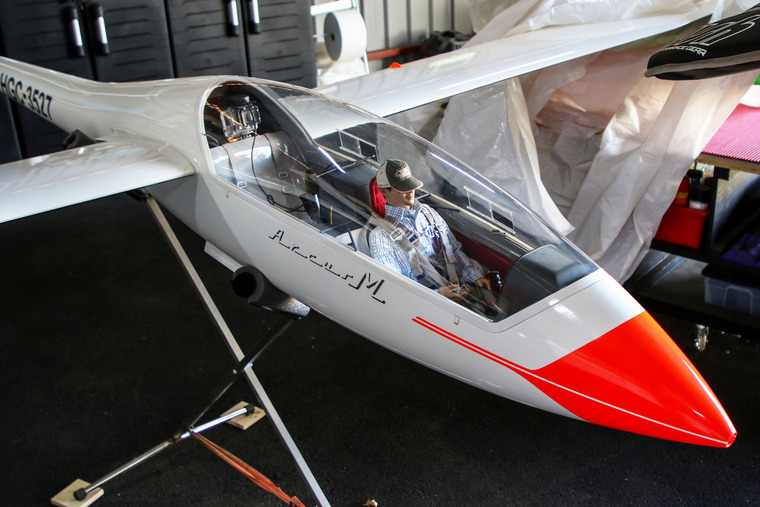
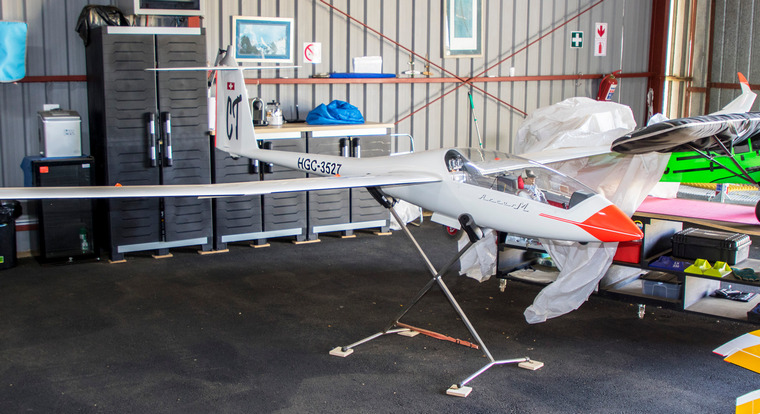
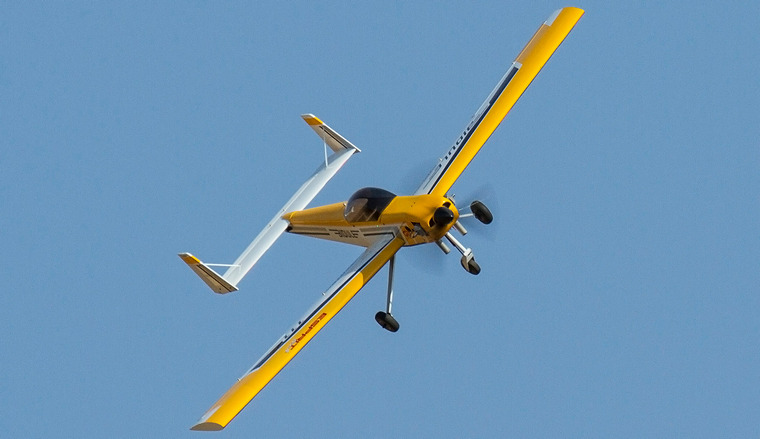
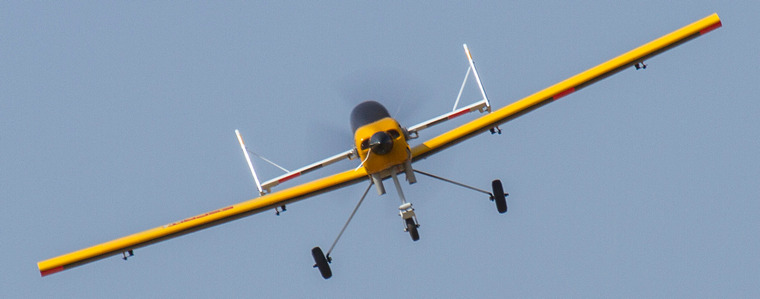
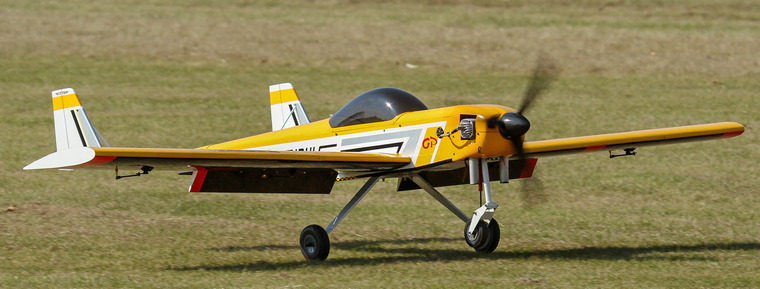
Photos (Supplied by Dave Claxton):
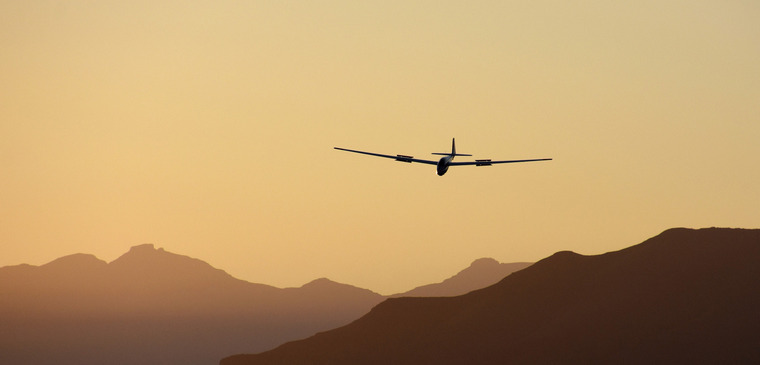
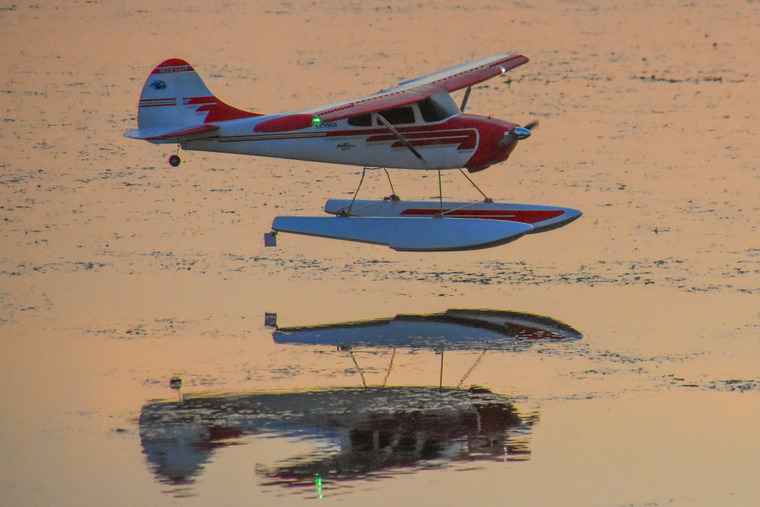
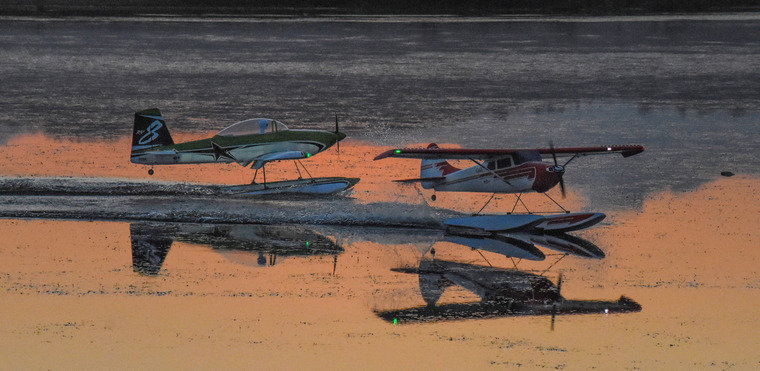
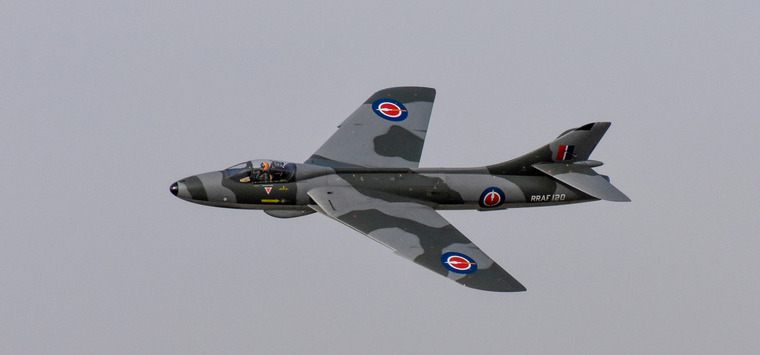
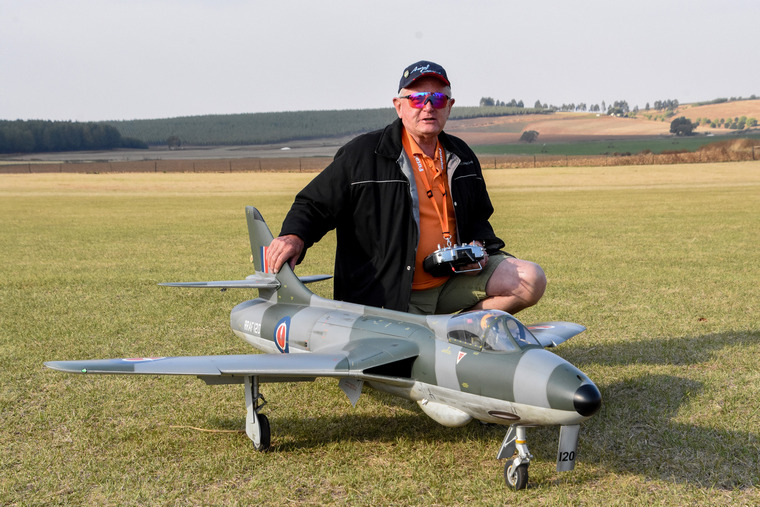
Eric Bell and his Hawker Hunter FGA4 in RRAF colours - this model jet has a top speed of 300 kph! These pictures were taken at the RC fly-in the weekend after our visit.
History
This was not easy to compile or corroborate, but several members contributed details in particular one of the founding members, Brian Loader. Much of the history below was provided by Brian.
The Club, as it known today, has its origin dating back before the Second World War (1937). It was situated on what was known as Isipingo Flats, (the old Durban International airport site.) At that stage, it was known as the Durban Gliding Club.
The Club's gliders were confiscated by the government during the war, to help train South African pilots for the war. Some devious members managed to hide one aircraft, hoping to be able to fly again after the war was over. These aircraft were of the Dagling type, otherwise known as A-frames. During the war Isipingo Flats became a POW camp.
At the conclusion of hostilities, the club was re-named the Durban and Pietermaritzburg Gliding Club. It was situated at the Ferro Alloys site in Cato Ridge. It operated from there for a while but due to restrictions like the length of the runway, the club went into hibernation for a while. Once the Pietermaritzburg Airfield, opened the club resumed. This happened in the early 50s and they had two aircraft, a two-seater and a glider which was home built by Eric "Toffee Apple" Tollis. The latter was a pod and boom construction. All the launches were done by aerotow.
Sometime later, there was an unfortunate aerial collision in which one pilot died and one survived. Due to lack of aircraft, the club again was unable to operate for a while. The club was saved from extinction by Sam Barker, who used to do aero towing on his farm. He helped to keep the club going by towing his Slingsby T21 to Pietermaritzburg nearly every weekend, weather permitting. He did this at no charge to the club.
This arrangement carried on for a while until a tug pilot nosed over Sam's Piper Super Cub and just walked away. Sam rightfully was not impressed and when there was no help forthcoming from the members, the arrangement folded.
The Club, in the form it is known today, started around 1968 or 1969. The first meeting was held at the Royal Yacht Club and it was decided that a Schleicher Ka-7 would be purchased from the SAAF for the huge sum (at the time) of R2000 including parachutes. Thus, the club was reborn again and at the helm were Hans Jobach, Brian Walters and Dick Becke. Dick was the club's first Chief Flying Instructor and is still in the record books for the absolute glider height record he achieved in August 1977 (11640m / 38189 ft). He was a Royal Air Force Mosquito pilot during WW2. Brian Loader joined the team shortly afterwards. Brian was the backbone of the club and was given the engine and mechanical side to sort out. All launches were aerotows on the Pietermaritzburg Airfield. It was found even in those days that aerotow was expensive and it was decided to build a winch. Brian Loader and Jan van Zyl did the work. David Wilson recounted that Brian was a very skilled pilot and instructor of the old school type. He believes Brian would have done very well in competition had he been in a position to travel and compete.
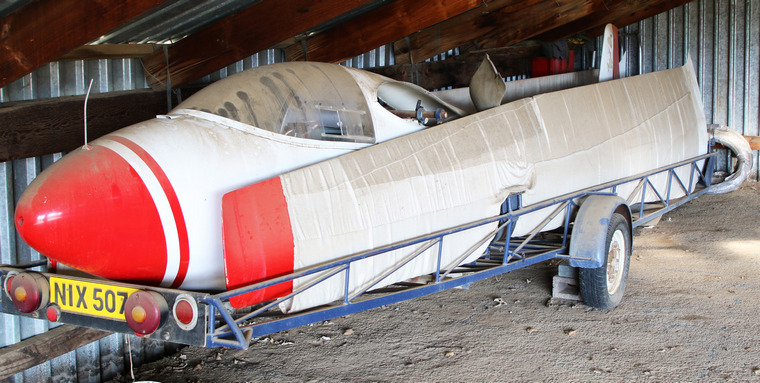
Schleicher Ka-6E Rhonsegler. This is the actual glider that set the altitude record presently owned by David Wilson. Apparently, the extreme cold at that altitude cracked the paint and it had to be re-painted after the record-breaking flight.
Launches continued using the winch until powered flying traffic at Pietermaritzburg began to increase. It was decided to move to the club to the Estcourt Airfield. They lasted there until there was a mishap with a Mr Barlow's twin-engined aircraft that became entangled in a tow wire, while he was taxiing to the hangars. This damaged the aircraft and the local municipality advised the club it would have to move.
Brian Walters, who was from the Underberg region, began scouting for suitable sites for a new airfield that the club could use. He flew off one day in his Schleicher K14 motor glider (this took place about 1972) and came back and said he had found a nice field. He had spoken to the owner Dennis Wilson, who agreed to have the club on his farm on condition that they taught him to fly! This was readily agreed. Dennis had apparently managed to do a little flying during the war in the Middle East and this included a few glider flights. So, the next weekend the club members packed the gliders, the winch and other items and arrived at the present location. Dennis was apparently a little surprised at the speed of the operation- they probably wanted to make sure he would not change his mind!
At this time, the club had a Schleicher Ka7, a Schleicher Ka6e and the Schleicher K14. Initially the club used an old fertiliser shed as their base situated on the road near the present runway 05. The size of the shed was a problem and it was difficult to get the aircraft out and put them away again. A few years later, the club then built an A-frame clubhouse (designed by Brian Walters) and a hangar. After this, the shed was apparently stripped and carted away by piece by piece by unknown thieves. The original clubhouse burnt to the ground after a lightning strike in the 80s and the present structure was built after that.
Former club president Tibs Tedeschi told me that they only good part of this disaster was the fact that he had insisted that the clubhouse was insured. Some members were opposed to this due to the additional expense, but his decision was proved to be the correct one! One member told Tibs that if the club ever caught fire, he would kiss Tibs' posterior on the town hall steps! It did not happen, but Tibs had proved his point. Unfortunately, a lot of club memorabilia was lost in the fire.
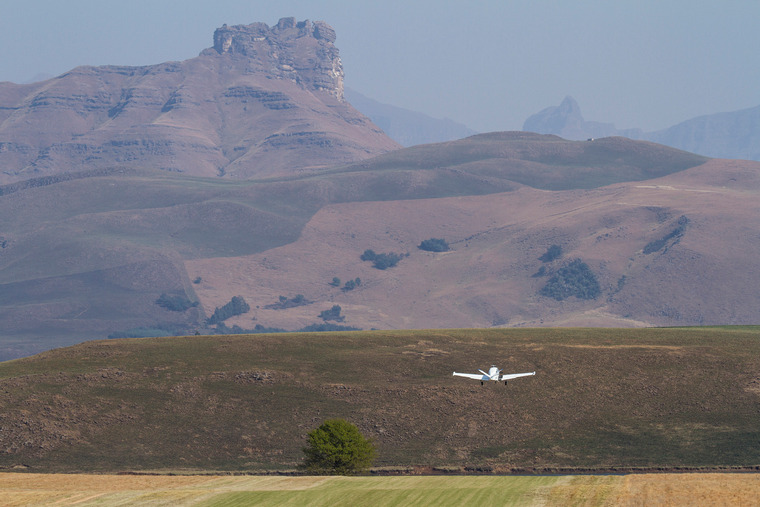
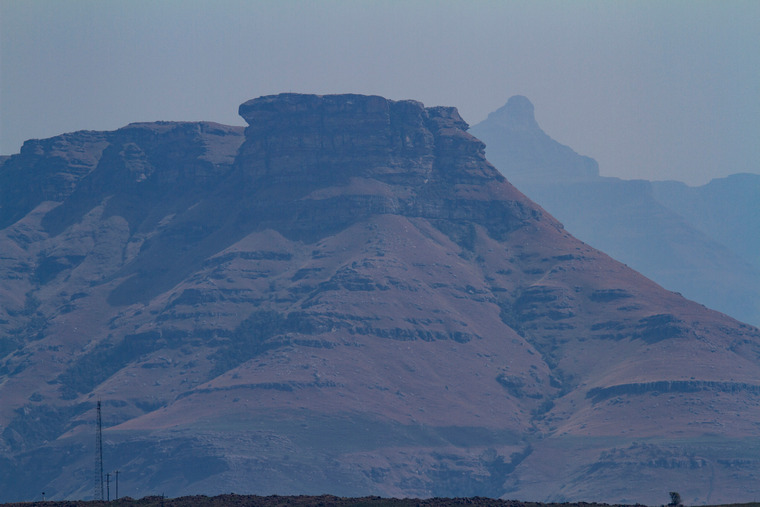
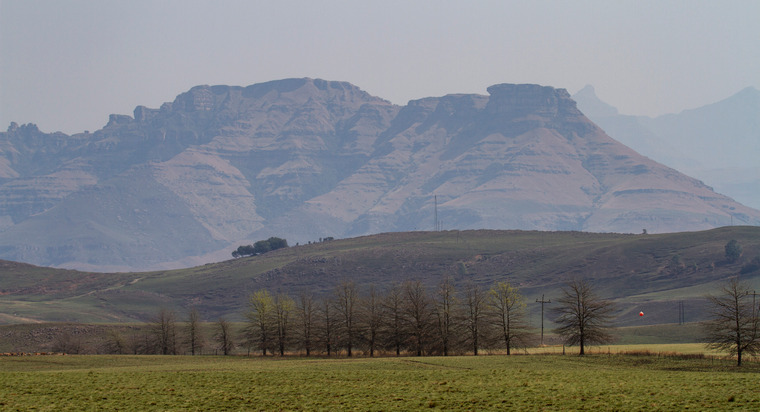

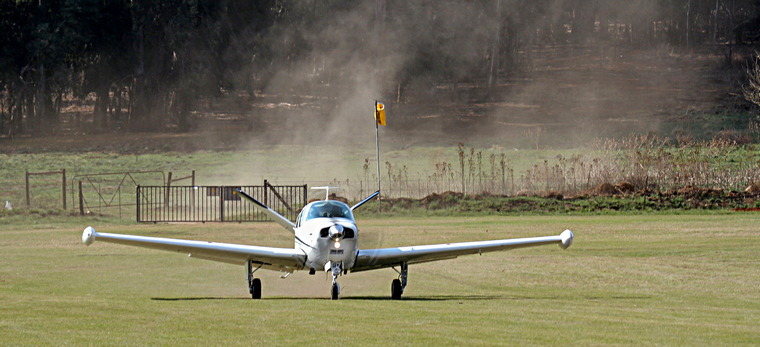
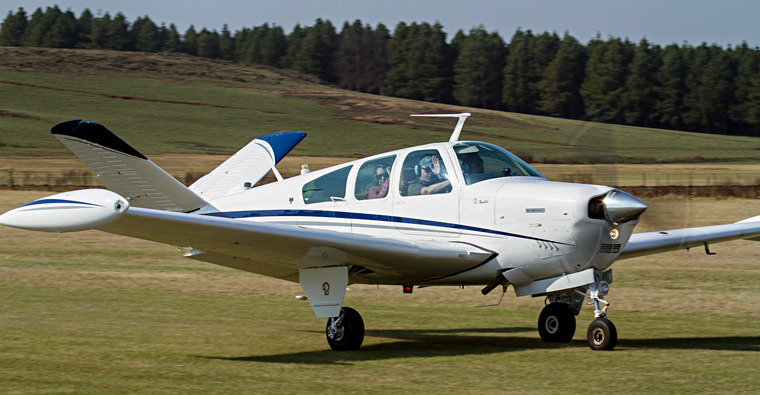
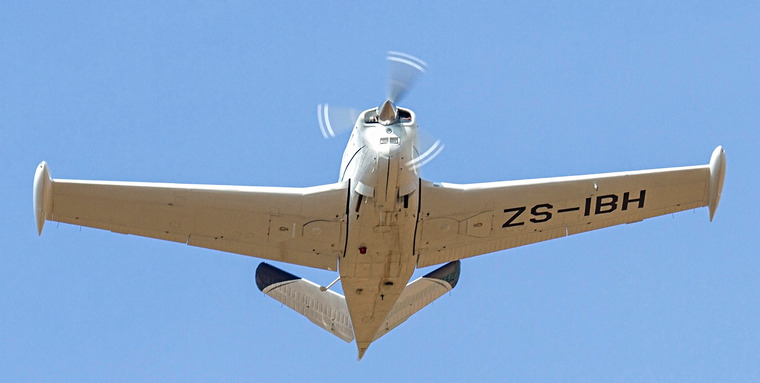
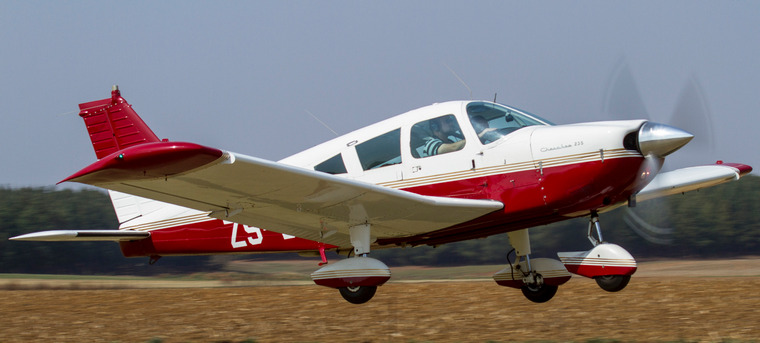
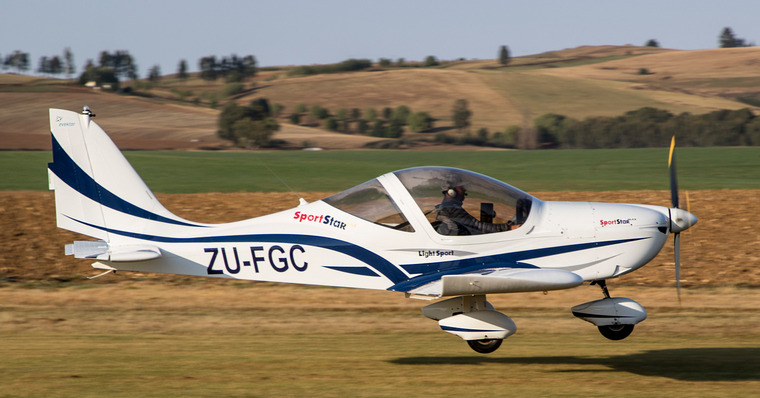
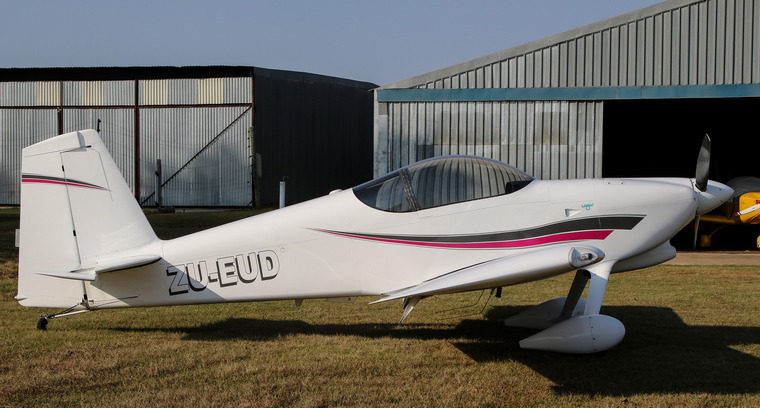
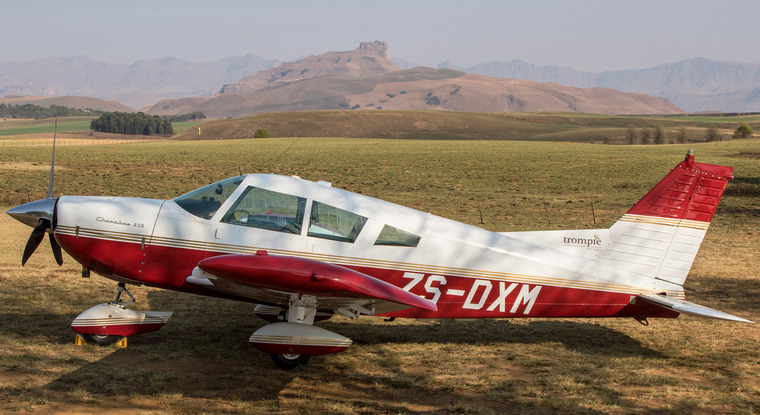
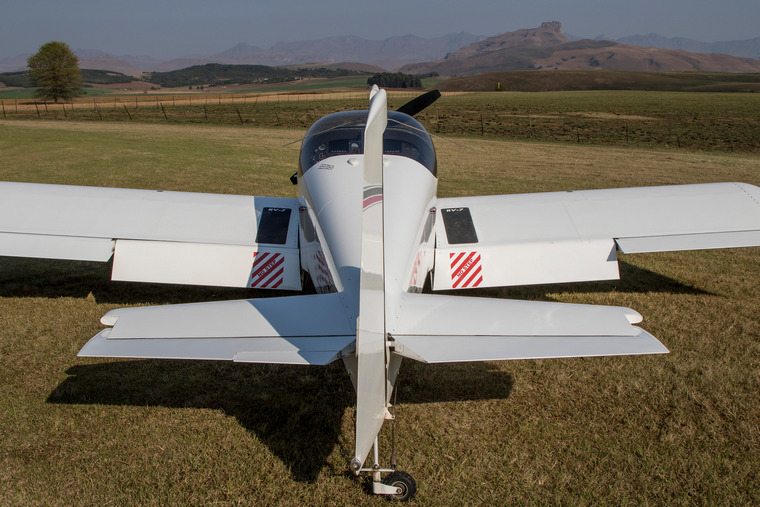
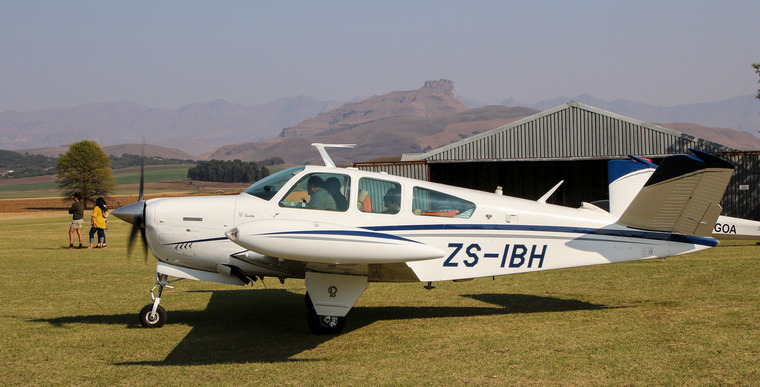
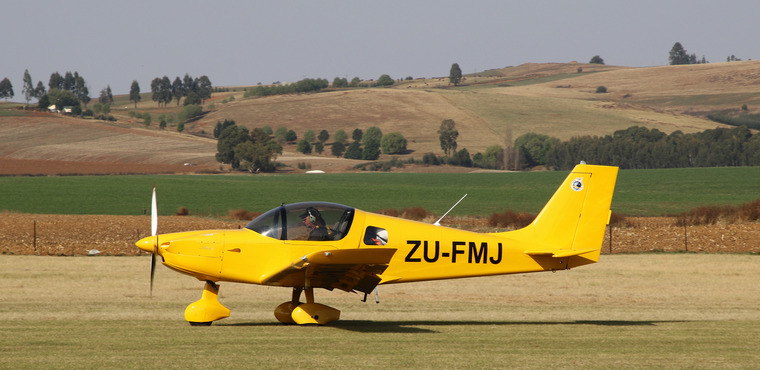
PLEASE GO TO
www.youtube.com/channel/UCCuRVZAGodT6sztTeXBGeMw
and subscribe to our YouTube channel

 |
 |
 Copyright © 2024 Pilot's Post PTY Ltd
The information, views and opinions by the authors contributing to Pilotís Post are not necessarily those of the editor or other writers at Pilotís Post.
Copyright © 2024 Pilot's Post PTY Ltd
The information, views and opinions by the authors contributing to Pilotís Post are not necessarily those of the editor or other writers at Pilotís Post.